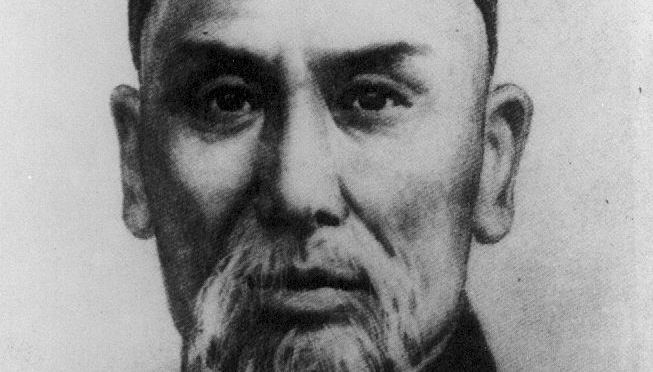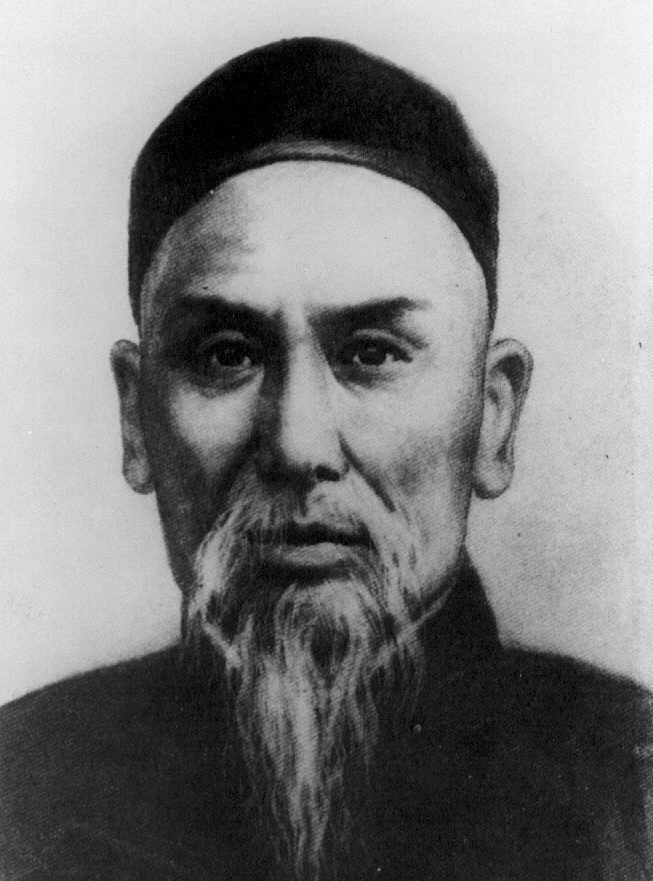Native name 杨露禅 Name Yang Luchan Teacher Chen Changxing Style Yang-style taijiquan Martial art Chinese martial arts | Nationality Chinese Died 1872 Role Martial arts teacher | |
 | ||
Born 1799Guangping, China ( 1799 ) Rank Founder of Yang-style taijiquan Notable students Yang Pan-hou, Yang Jianhou, Wu Yuxiang | ||
Other names Yang Fukui,Yang Wudi Similar Chen Fake, Wong Fei hung, Bruce Lee | ||
Yang luchan family form
Yang Lu-ch'an or Yang Luchan, also known as Yang Fu-k'ui or Yang Fukui (1799–1872), born in Kuang-p'ing (Guangping), was an influential teacher of the internal style martial art t'ai chi ch'uan (taijiquan) in China during the second half of the 19th century. He is known as the founder of Yang-style t'ai chi ch'uan.
Contents
- Yang luchan family form
- Master Zhang teaches Yang Luchans Old Six Paths Tai Chi Chan The last 54 of 108 movements
- History
- The Legend of Yang Wudi
- Origin of the Moniker Taijiquan
- Subsequent lineage
- References

Master Zhang teaches Yang Luchan's Old Six Paths (T'ai Chi Ch'üan): The last 54 of 108 movements
History

Yang Lu-ch'an’s family was a poor farming/worker class from Hebei Province, Guangping Prefecture, Yongnian County. Yang would follow his father in planting the fields and, as a teenager, held temporary jobs. One period of temporary work was spent doing odd jobs at the Tai He Tang Chinese pharmacy located in the west part of Yongnian City, opened by Chen De Hu of the Chen Village in Henan Province, Huaiqing Prefecture, Wenxian County. As a child, Yang liked martial arts and studied Changquan, gaining a certain level of skill.
One day Yang reportedly witnessed one of the partners of the pharmacy utilizing a style of martial art that he had never before seen to easily subdue a group of would-be thieves. Because of this, Yang requested to study with the pharmacy's owner, Chen De Hu. Chen referred Yang to the Chen Village to seek out his own teacher—the 14th generation of the Chen Family, Ch'en Chang-hsing.
One night, he was awakened by the sounds of "Hen" (哼) and "Ha" (哈) in the distance. He got up and traced the sound to an old building. Peeking through the broken wall, he saw his master Chen, Chang-xing teaching the techniques of grasp, control, and emitting jin in coordination with the sounds "Hen" and "Ha." He was amazed by the techniques and from that time on, unknown to master Chen, he continued to watch this secret practice session every night. He would then return to his room to ponder and study. Because of this, his martial ability advanced rapidly. One day, Chen ordered him to spar with the other disciples. To his surprise, none of the other students could defeat him. Chen realized that Yang had great potential and after that taught him the secrets sincerely.
After mastering the martial art, Yang Lu-ch'an was subsequently given permission by his teacher to go to Beijing and teach his own students, including Wu Yu-hsiang and his brothers, who were officials in the Imperial Qing dynasty bureaucracy. In 1850, Yang was hired by the Imperial family to teach Taijiquan to them and several of their élite Manchu Imperial Guards Brigade units in Beijing's Forbidden City. Among this group was Yang's best known non-family student, Wu Quanyou. This was the beginning of the spread of Taijiquan from the family art of a small village in central China to an international phenomenon. Due to his influence and the number of teachers he trained, including his own descendants, Yang is directly acknowledged by 4 of the 5 Taijiquan families as having transmitted the art to them.
The Legend of Yang Wudi
After emerging from Chenjiagou, Yang became famous for never losing a match and never seriously injuring his opponents. Having refined his martial skill to an extremely high level, Yang Lu-ch'an came to be known as Yang Wudi (楊無敵, Yang the Invincible). In time, many legends sprang up around Yang's martial prowess. These legends would serve to inform various biographical books and movies. Though not independently verifiable, several noteworthy episodes are worth mentioning to illustrate the Yang Wudi character:
Origin of the Moniker Taijiquan
When Yang Lu-ch'an first taught in Yung Nien, his art was referred to as Mien Quan (綿拳 Cotton Fist) or Hua Quan (化拳 Neutralising Fist). Whilst teaching at the Imperial Court, Yang met many challenges, some friendly some not. But he invariably won and in so convincingly using his soft techniques that he gained a great reputation.
Many who frequented the imperial households would come to view his matches. At one such gathering in which Yang had won against several reputable opponents, the scholar Ong Tong He was present. Inspired by the way Yang moved and executed his techniques, Ong felt that Yang's movements and techniques expressed the physical manifestation of the philosophy of Taiji. Ong wrote for him a matching verse:
Thereafter, his art was referred to as Taijiquan and the styles that sprang from his teaching and by association with him was called Taijiquan.
Subsequent lineage
Yang Lu-ch'an passed his art to:
